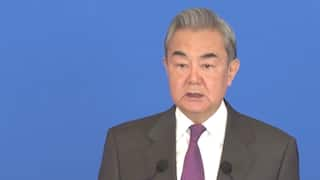Pride Month Unveils The Intersex-Inclusive Progress Pride Flag: Celebrating Diversity And Unity | Explained
As Pride Month continues, a new intersex-inclusive flag is unveiled, symbolising the LGBTQ+ community's diversity and unity. Read on to know more about it.

As Pride Month unfolds, celebrations are being held all over the world, including in India. People from all walks of life are coming together to celebrate and honour the LGBTQ+ community's rich history, accomplishments, and ongoing struggle for equality. A newer version of the pride flag is prominently displayed in this inclusive spirit, symbolising the evolving understanding and recognition of various sexual orientations and gender identities.
What Is The Pride Flag?
The rainbow-striped flag, the most popular Pride flag, has been updated in recent years to reflect the intersectional diversity of LGBTQIA2-S communities. Before the rainbow flag became popular, these communities used a variety of symbols, including the pink triangle, green carnations, purple handprints, the Greek lambda symbol, blue feathers, and ace playing cards.
Harvey Milk, the first openly gay man elected to public office, collaborated with Gilbert Baker in the late 1970s to create the original rainbow-striped flag with eight colours. Each colour represented something symbolic. Due to manufacturing issues, the flag was later changed to a six-colour version, resulting in the familiar rainbow flag we know today.
IN PICS | Rainbows All Over White House As It Celebrates Pride Month
A More Inclusive Flag:
The iconic rainbow flag was redesigned in 2021 to emphasise inclusivity within the LGBT+ movement. Building on previous inclusive flag designs, this updated design aimed to incorporate and recognise intersex individuals. Morgan Carpenter's intersex flag, designed in 2013, raised awareness of intersex people.
The Office of LGBT Affairs in Philadelphia added black and brown stripes in 2017 to represent people of colour in the community. Daniel Quasar redesigned the flag in 2018 to include trans people, resulting in the Pride Progress flag. Continuing the journey of inclusion, Valentino Vecchietti of Intersex Equality Rights UK was instrumental in developing the Pride Progress flag design, which included the intersex flag.
The 2021 Flag Explained:
The Intersex-Inclusive Progress Pride Flag aims to include and represent intersex people within the LGBTQ+ community as a whole. According to the United Nations, intersex people are born with sex characteristics (including genitals, gonads and chromosome patterns) that do not fit typical binary notions of male or female bodies.
According to a report by Indian Express, the colours red, orange, yellow, green, blue, and violet, respectively, represent life, healing, new ideas, prosperity, serenity, and spirit. A chevron part of the flag with black and brown stripes to represent people of colour and white, blue, and pink stripes to represent trans people is also included. A yellow stripe with a purple circle represents intersex people, acknowledging their unique experiences and identities, the report said.
The display of the new inclusive flag during Pride Month represents a commitment to recognising and celebrating the diversity within the LGBTQ+ community, ensuring that all individuals are included and represented in the ongoing fight for equality and acceptance.
Related Video
Delhi flood update: once again AAP points out BJP, for Delhi's present situation




























